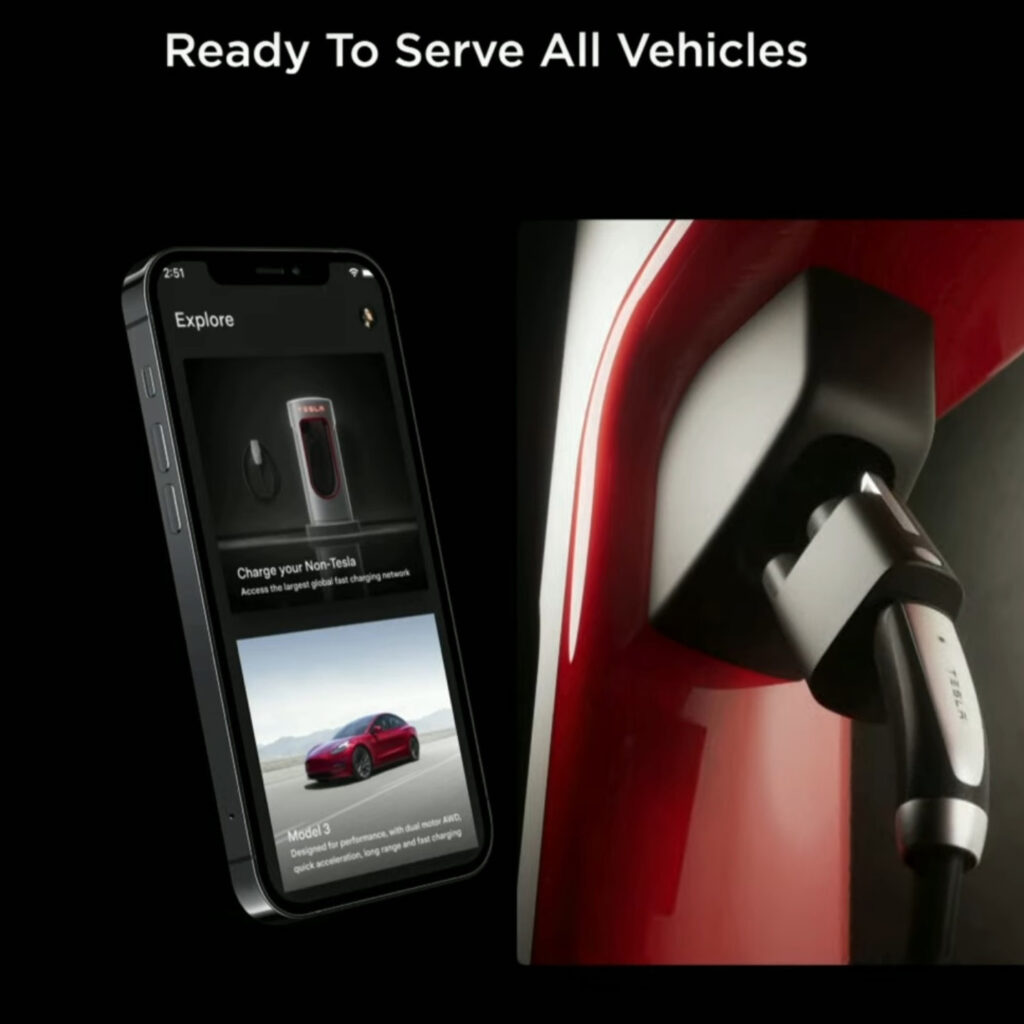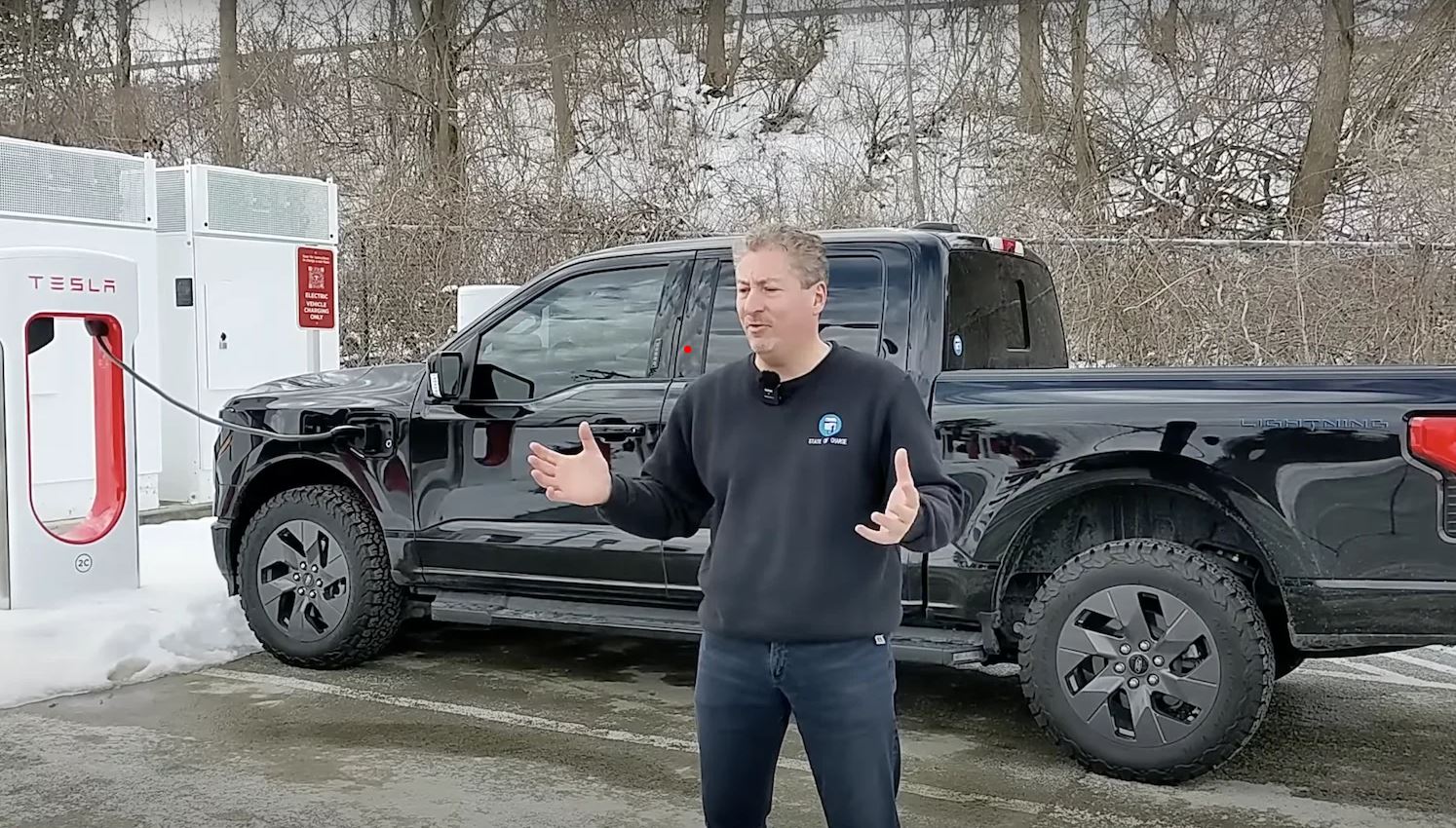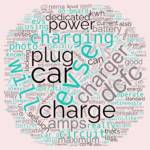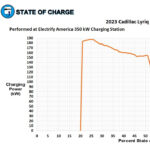TL;DR
Starting with the 2025 model year, Ford EVs will be made with the NACS plug. Not to be left out, current owners of the Mach-E, F-150 Lightning, and E-Transit vans will be given an adapter to allow them to charge at all 12,000 of Tesla’s Supercharger stations. While this is great news for current and future Ford owners, this Earth-moving news also creates a lot of questions, not the least of which is, “What happens now?”
The Nitty Gritty Details of Ford’s Use of the NACS Plug
On May 25, 2023, Ford and Tesla announced in a joint statement that Ford will begin shipping its EVs with the NACS plug and that Ford vehicles will be able to charge at all 12,000 Tesla Supercharger stations. Tesla, not known for its press releases, announced the news on Twitter:
Excited to welcome Ford owners to thousands of Superchargers across North America next year⚡️✌️https://t.co/giU8PKHexE
— Tesla Charging (@TeslaCharging) May 25, 2023
Tesla CEO Elon Musk also retweeted Ford’s press release:
According to its press release, Ford EVs will begin shipping with the NACS plug in the 2025 model year. In the meantime, Ford will provide a Tesla-developed adapter for its F-150 Lightning, Mach-E, and E-Transit vehicles so that those owners can begin using Tesla’s V3 version of the Supercharger network. Note that as of May 2025, most Superchargers are V3, so this really opens up possibilities for those owners.
The following day, Ford clarified that it will ship the adapter, free of charge, to all owners of compatible (Mach-E, F-150 Lightning, and E-Transit) vehicles. That will come at no small cost to Ford, demonstrating the depth of its commitment to this change.
This change of direction with Ford’s use of the NACS standard represents a tectonic shift in the EV landscape. Just over a week ago, with resounding support from informed industry insiders, I (now somewhat infamously) wrote that EV manufacturers supporting CCS would never migrate to the NACS standard. I have never been more pleased to be wrong.
One of the reasons given that other manufacturers would never adopt the NACS standard was that their supply chain could be constrained by the supply of key parts by a direct competitor. One can imagine Ford doing something that annoys Tesla, so Tesla retaliates by suddenly limiting key parts, software upgrades, or even limiting Ford drivers at the chargers themselves. The flip side to that coin is that Ford now sees its customers being constrained by the current CCS network, which, while improving, is nowhere near as reliable as Tesla’s.
Where does the industry go from here? No one knows for sure, despite the predictions at the end of CCS. However, more choice always works to the advantage of the consumer.
Educated Guesses
We can make some educated guesses on where the industry is headed. CCS network providers such as EVgo and Electrify America were already feeling the heat from Tesla regarding ease of use, so they adopted the goal of the “one and done” charging experience. We can only imagine the meetings that CCS networks’ board of directors are having now. This announcement will only sharpen their resolve to achieve the “one and done” charging experience; otherwise, they will be relegated to be acquired or, worse, the dustbin of history.
There will be similar conversations in the boardrooms of other EV manufacturers. You can’t log into a social media forum dedicated to any CCS-equipped EV without hearing the laments of the CCS charging experience. From BMW to Lucid to Rivian and Mercedes-Benz (as great as those vehicles are), the charging experience can define the ownership experience. Those manufacturers must all now take a hard look at the decision to back CCS, at least in North America.
Other Questions That Remain

Tesla’s “Magic Dock” was the first step to opening its network to EVs using the CCS standard. But will a similar adapter that is planned for Ford’s current EVs be made widely available? And at what price?
- Will other EVs get access to Telsa’s adapter? The announcement clearly stated that Tesla would design and deliver an adapter allowing F-150 Lightning and Mach-E vehicles to charge on Tesla’s network. The following day, Ford CEO Jim Farley said that the adapter would be sent to eligible Ford owners free of charge. But will that adapter be made available to owners of other CCS-equipped EVs? I’m going with yes, although my crystal ball did let me down pretty hard just two weeks ago.
- What pricing will Ford customers be charged to access the Supercharger network? It has been disclosed that Ford customers will be billed via FordPass or Ford Pro Intelligence when using the Tesla Supercharging network. What that doesn’t say is that Tesla isn’t going to give Ford a price break and that Ford is absolutely going to get its cut. Any time there is a third party getting a cut, the consumer is going to pay more. Frankly, I’m OK with this. Tesla paid for the development and build-out of its Supercharger network. They should get paid for letting others use it. If I get my adapter (see item one above), I’ll absolutely pay the premium to use it. But I’ll also only use it if I have no other options available.
- With Ford’s use of the NACS, will Ford abandon CCS starting in 2025? This question has received a lot of speculation in the press, with some media outlets concluding that it will. I read Ford’s press release pretty thoroughly (and more than once), and nowhere did it say it would stop putting CCS plugs on cars. I interpret that as no, Ford will not abandon CCS. Even though the NACS standard allows for “bi-directional charging,” or V2X (see section 4.6.1 in the NACS Specification), that is little more than a declaration of Tesla’s future intent. NACS has zero bi-directional capability as of this writing. Ford spent a lot of money baking bi-directional charging into the F-150 Lightning, which is a powerful feature that its potential owners will want. Ford is not going to turn its back on this market.
- The last significant question that remains in my mind is, how well will those Mach-E and F-150 Lightning owners be received by Tesla owners who, until now, have enjoyed a monopoly on the Supercharger network? If social media is any clue, the answer is surprisingly well. The most negative comment I saw in my search of various threads on the topic is that of resignation to the inevitable. One person commented, ”It’s time for us to welcome our cousins.”
Not everyone is bullish on this sea change. Regardless of the risks, fair and free competition has proven again and again that consumers will benefit in the long run. Before the May 25th announcement from Ford and Tesla, it was already a great time to be in the market for a new EV – there is so much more choice than even two years ago. After the announcement, however, it is an even better time.
Next week, we will cover maintenance for EVs.









All good questions and all the answers in one place. Very well done! Thanks!
“From BMW to Lucid to Rivian and Mercedes-Benz (as great as those vehicles are), the charging experience can define the ownership experience. Those manufacturers must all now take a hard look at the decision to back CCS, at least in North America.”
The problem isn’t the plug but the attitude of the other networks. If Electrify America et al switched to the NACS plug, it doesn’t make a blind bit of difference to the usability and reliability. Conversely, in Europe we have Tesla Superchargers with CCS plugs on and they are still streets ahead of everybody else, to the point where it just influenced my purchase decision yet again. Only Fastned comes close for reliability and usability, but without the level of geographic coverage yet. Ionity, the joint venture between BMW, Ford, Hyundai, Mercedes and VAG, should have the clout to lead by a mile, but they trail woefully. Many of their sites are still being installed with 4 units and their payment and activation is still so clunky.
Point being that a decade after Tesla showed the rest of the industry what a rapid charging network should be, the rest still haven’t really learnt. Only Mercedes has recently said they will roll out their own, for the same reasons that Tesla had to. The plug format isn’t the reason for that.